Samsung S90D or otherwise S94D has pleasantly surprised us in many ways. It offers excellent picture quality as befits a TV with an organic matrix. Depending on the size, the television can have different types of OLED panels. In the model we tested, the 65' version with a QD-OLED panel, the blacks are deep, and the colours are vivid and intense. The brightness of the screen, thanks to quantum dot technology, makes HDR effects very impressive. Watching dynamic scenes full of details is completely immersive. This is an ideal choice for those who want to enjoy cinema at the highest level at home. However, we noticed that the factory colour settings might require adjustment. But after the appropriate calibration, the TV showcases its full potential and competes with the best televisions, even above its price range. This model stands out with excellent viewing angles - better than the WOLED panel variants. The picture is clear and colourful from any position in the room. The Tizen operating system makes everyday use of the TV easy. Navigating apps and streaming services is simple and intuitive. Additionally, support for AirPlay and access to the SmartThings ecosystem enhance the multimedia capabilities of the device. When it comes to motion smoothness, the 144Hz panel handles fast scenes excellently and additionally eliminates motion blur. Watching sports or dynamic movies is a pleasure. For gamers, it offers support for HDMI 2.1 and low input lag, making it a great choice for console gaming. Despite numerous advantages, we noticed a few drawbacks. In bright rooms, the blacks on the QD-OLED panel lose their depth. This can be noticeable when watching during the day. Another somewhat less significant issue could be the readability of fonts when using a PC. It could be better; some texts are less sharp compared to other models. Nevertheless, the 65' Samsung S90D or S94D is a television that combines exceptional picture quality, motion smoothness, and innovation. It is one of the best options in the premium segment that will meet the expectations of both cinema lovers and gamers.
- Matching (Score)
- Our verdict
- TV appearance
- Where to buy
- Contrast and black detail
- HDR effect quality
- Factory color reproduction
- Color reproduction after calibration
- Smoothness of tonal transitions
- Image scaling and smoothness of tonal transitions
- Blur and motion smoothness
- Console compatibility and gaming features
- Input lag
- Compatibility with PC
- Viewing angles
- TV efficiency during daytime
- Details about the matrix
- TV features
- Apps
- Playing files from USB
- Sound
Samsung QD-OLED S90D / S94D vs Hisense U7Q
Direct compare
S90DAT / S94DAT
U7Q / U78Q
Available screen sizes: 65”

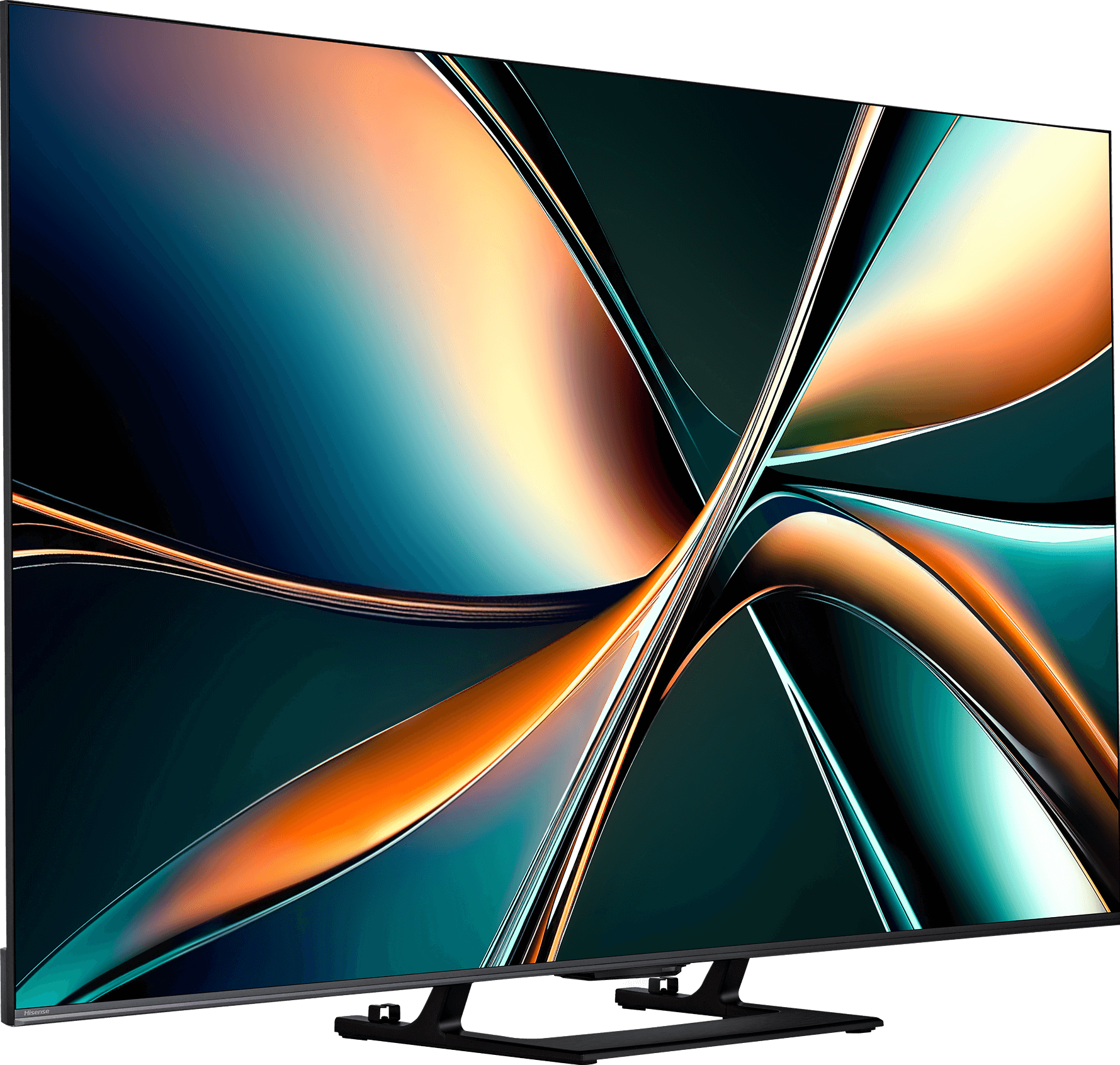
Panel type: QD-OLED
Resolution: 3840x2160
System: Tizen
Model year: 2024
Complete the survey to find out the result

Panel type: LCD VA
Resolution: 3840x2160
System: VIDAA
Model year: 2025
Complete the survey to find out the result

Overall rating
8.2
7.2
Movies and series in UHD quality
8.5
6.7
Classic TV, YouTube
9.2
6.8
Sports broadcasts (TV and apps)
8.9
6.5
Gaming on console
9.6
8.0
TV as a computer monitor
8.6
8.6
Watching in bright light
5.3
6.2
Utility functions
7.7
8.9
Apps
8.7
7.7
Sound quality
7.4
7.2
Complete the survey to find out what fits your preferences
Advantages
Perfect black (OLED)
Great for 4K and HD content
Excellent for gamers - 144hz, HDMI 2.1, low input lag.
Among the best viewing angles on the market
High coverage of a wide color gamut
Above-average sound quality
Great contrast and deep black
Very good fluidity of tonal transitions (close to reference level)
High brightness
Supports 4K 144 Hz and even 240 Hz in Full HD
VRR, ALLM, G-SYNC – a full package for gamers
Low input lag
Pleasant sound with light bass
Many classic TV features built into the VIDAA system
Disadvantages
No support for DTS soundtracks (may be an issue with external players)
Black levels issues during the day
No support for HGiG (makes setting HDR on consoles difficult)
Brightness management issues
Poor viewing angles – typical for VA panels
Closed VIDAA system – missing some apps
Our verdict
Hisense U7Q is one of the most interesting Mini-LED TVs in its price segment, clearly demonstrating that Hisense is starting to make a mark in the market not only through the price-to-performance ratio but also through increasingly refined picture quality. Let's start with what truly impresses: the contrast and black levels are at a level that was recently unattainable in this price range. Combined with smooth tonal transitions, solid brightness, and a fast 144Hz panel, the U7Q becomes a TV that excels in both movies and gaming. Gamers will find almost everything they can expect here – support for variable refresh rate (VRR), automatic game mode (ALLM), very low input lag, and even 240Hz in Full HD. All of this makes the U7Q suitable for both next-gen consoles and PCs. However, there are some downsides. When it comes to HDR content, one might want to say: “untapped potential” – you may ask why? The TV, due to its algorithms, dims small bright elements or excessively boosts them, which can spoil the viewing experience. There is also a lack of support for HGiG, the feature that would better match the console with the TV regarding HDR. In summary, briefly – the Hisense U7Q is a very versatile and complete TV that has its imperfections but makes up for them in many key aspects. For gamers, occasional movie watchers, or anyone looking for good equipment for everyday use – it’s one of the most cost-effective options in 2025. You just need to know what compromises you’re willing to make – and then it’s hard to be disappointed.
TV appearance






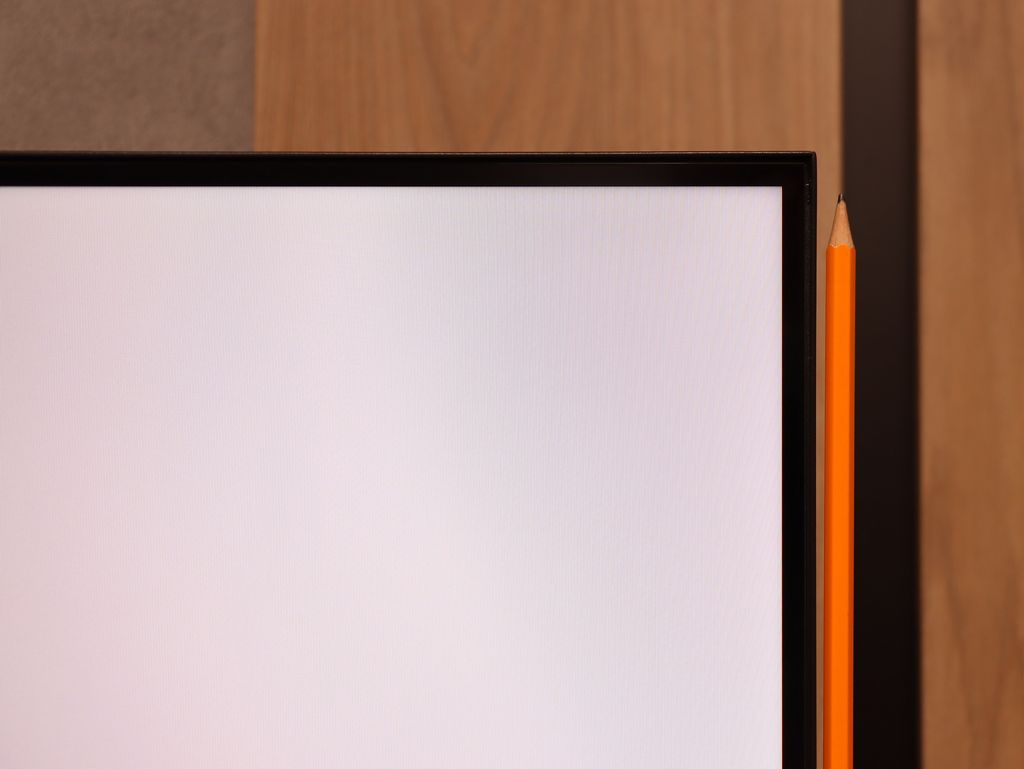
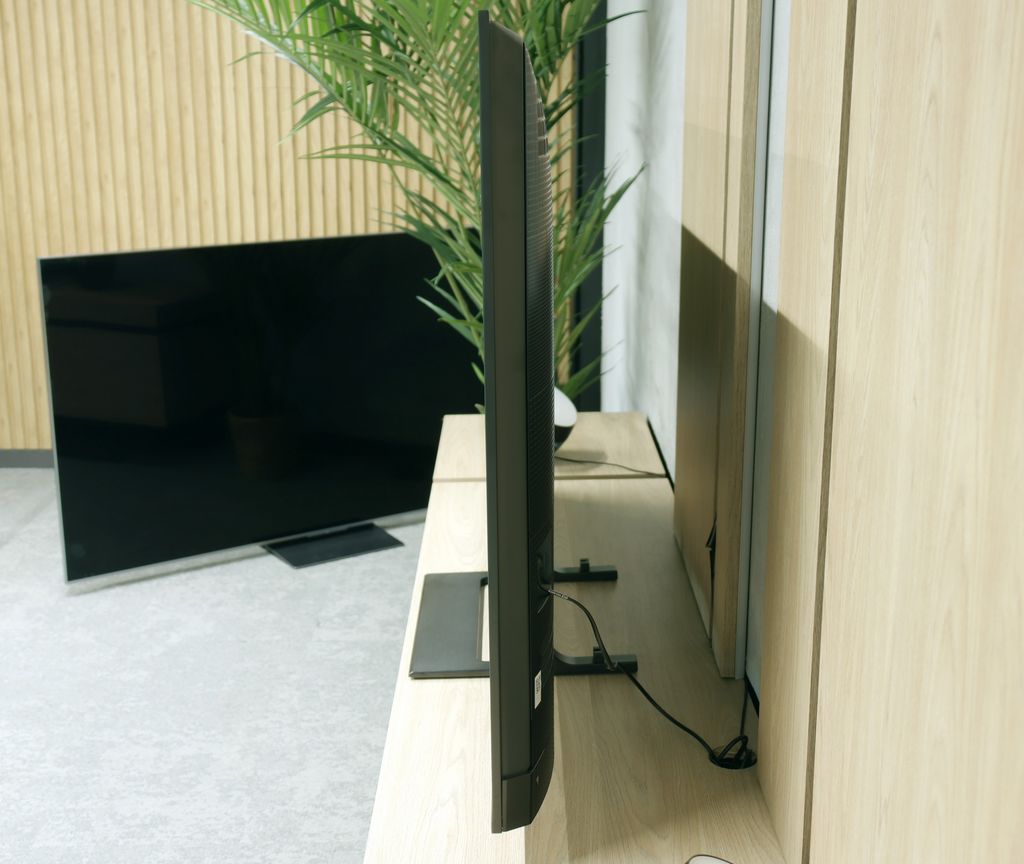
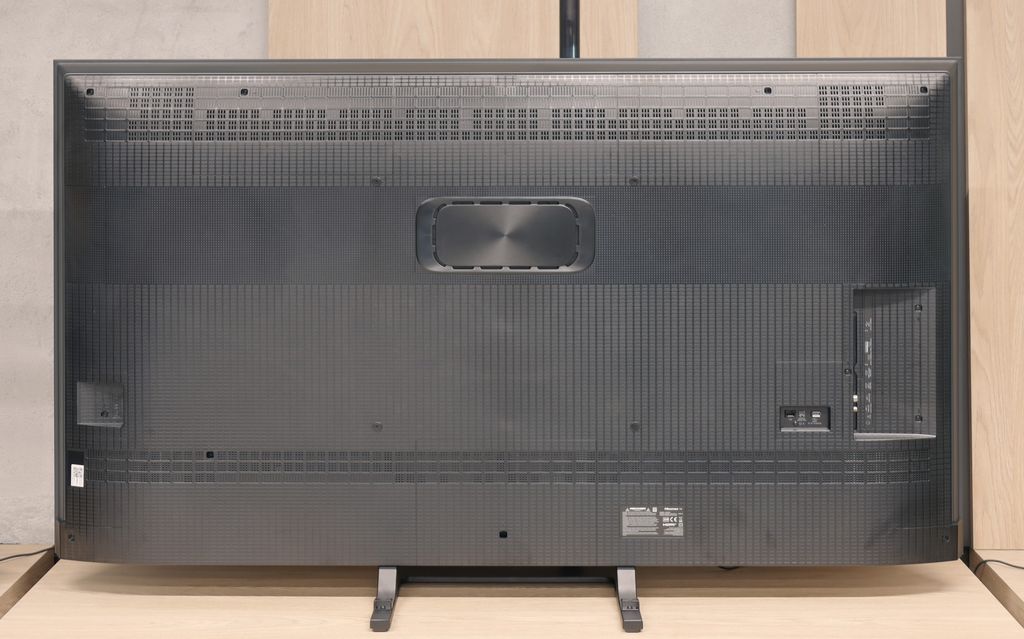
Contrast and black detail
10/10
7.5/10
Local dimming function: Yes, number of zones: 220 (10 x 22)
Contrast:

Result
∞:1

Result
∞:1

Result
∞:1

Result
∞:1

Result
∞:1

Result
278,000:1

Result
28,800:1

Result
11,100:1

Result
10,800:1

Result
6,250:1
Halo effect and black detail visibility:


Samsung S90D, thanks to the use of a QD-OLED panel, offers excellent contrast, which is one of its greatest advantages. In QD-OLED technology, each pixel emits its own light, allowing for perfect blacks and precise detail reproduction in dark scenes. Unlike traditional LCD panels with backlighting, where blacks often appear greyish, turned-off pixels in QD-OLED remain completely black. As a result, the television provides a dynamic, realistic image with exceptionally deep contrast. For example, in scenes from "Oblivion," the Samsung S90D brilliantly captures the intensity of the lantern lights, highlighting details in the bright areas of the image, and in "The Revenant," it perfectly showcases the character against the backdrop of a deep, black forest scene, emphasizing impressive contrast reproduction. It is worth noting that in the Samsung S90D model, only this specific size is equipped with the QD-OLED panel produced by Samsung Display, setting it apart from other versions. Nevertheless, regardless of the panel used, the blacks on this television will always be perfectly black thanks to OLED technology, which turns off pixels for absolute blackness. This means that in categories such as black levels and contrast, the S90D delivers excellent picture quality regardless of the type of panel.
U7Q is a Mini-LED backlit TV – just like the PRO version. What’s the difference? The version without the suffix simply has fewer dimming zones. In our 65-inch model with a VA panel, we counted 220 of them. And while that doesn’t impress as much as in the U7Q PRO, it still looks very good on paper for this price range. Alright, but how does it perform in practice? Surprisingly well. The contrast in the U7Q can reach up to 300,000:1, which provides a really solid black effect. In many scenes, it’s hard to find fault – the image has depth, and the highlights are well separated. Of course, Mini-LED is not OLED – so there are some limitations. In very challenging scenes with many dark details, the TV sometimes either ‘eats’ them, leaving a nice black, or slightly brightens the background, which can create a halo effect. That’s normal in this technology and should be taken into account. Despite these minor drawbacks – the contrast in the U7Q is really good.
HDR effect quality
6.6/10
4.6/10
Luminance measurements in HDR:

Result
833 nit

Result
904 nit

Result
913 nit

Result
927 nit

Result
478 nit

Result
521 nit

Result
160 nit

Result
351 nit

Result
98 nit

Result
674 nit
Scene from the movie “Pan” (about 2800 nits)


Scene from the movie “Billy Lynn” (about 1100 nits)


Static HDR10


Dynamic: HDR10+
Dynamic: Dolby Vision


HDR luminance chart:
Hisense U7Q
Luminancja HDR
Luminance of RGB colors
Samsung QD-OLED S90D / S94D
Luminancja HDR
Luminance of RGB colors
In the HDR effect quality category, Samsung S90D achieves remarkable results. On the luminance chart up to 10% window, the TV exceeds the magical threshold of 1000 nits, which is an impressive outcome. However, in the film scenes we tested, these values were slightly lower. Additionally, in the case of a scene with fullscreen sunlight glare, brightness drops to around 500 nits, but it still remains at a very good level. It is worth mentioning that this model stands out with very high colour gamut coverage, thanks to the QD-OLED panel used, which gives it an advantage over TVs with WOLED panels that cannot achieve such a wide spectrum of colours.
Since the algorithms responsible for blacks are performing quite well, we expected a similarly good outcome when it comes to brightness and overall HDR quality. Unfortunately, we have to disappoint you a bit here.
The U7Q is quite a bright television – under the best conditions, it can reach around 800 nits, which indeed impresses in some scenes, especially in scenes like those from the movie The Meg. Bright segments can shine, and the HDR effect is noticeable. The problem arises when very small, bright elements appear on a dark background – for example, in Sicario 2 or in the second scene from Life of Pi. At such moments, the dimming algorithms operate too aggressively. Yes, the blacks look great at that point, but the brightest spots can almost completely disappear, causing the HDR effect to vanish and details to be barely visible. That’s just the charm of this technology in this price segment.
As a consolation, it is worth mentioning that the U7Q is marketed as a QLED (in practice, a PFS layer is used, which operates very similarly), and it can indeed display a wide colour gamut – a DCI-P3 coverage of around 94% is a very good result for this class.
Factory color reproduction
7.1/10
6.3/10


Factory Mode
After calibration
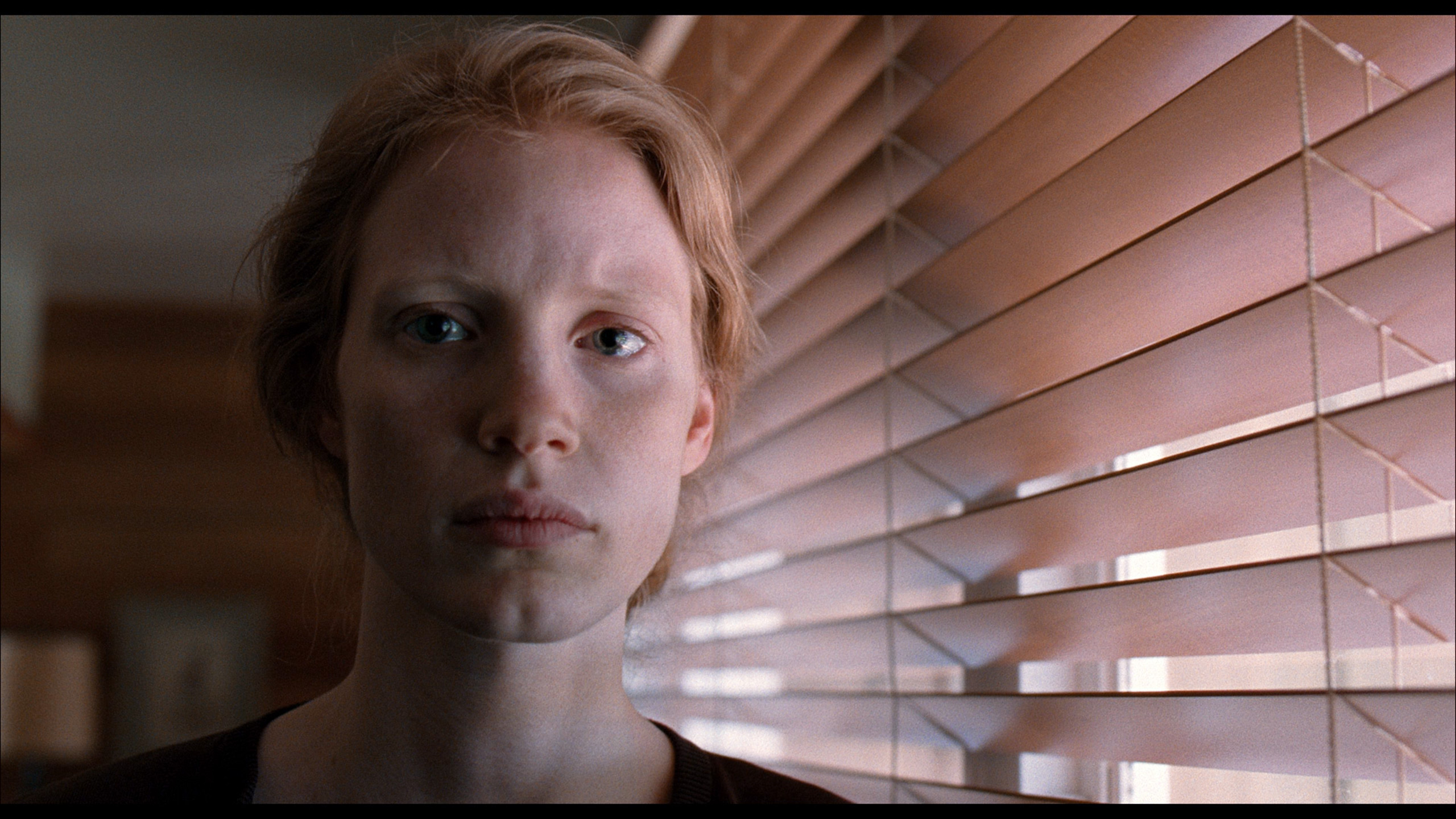
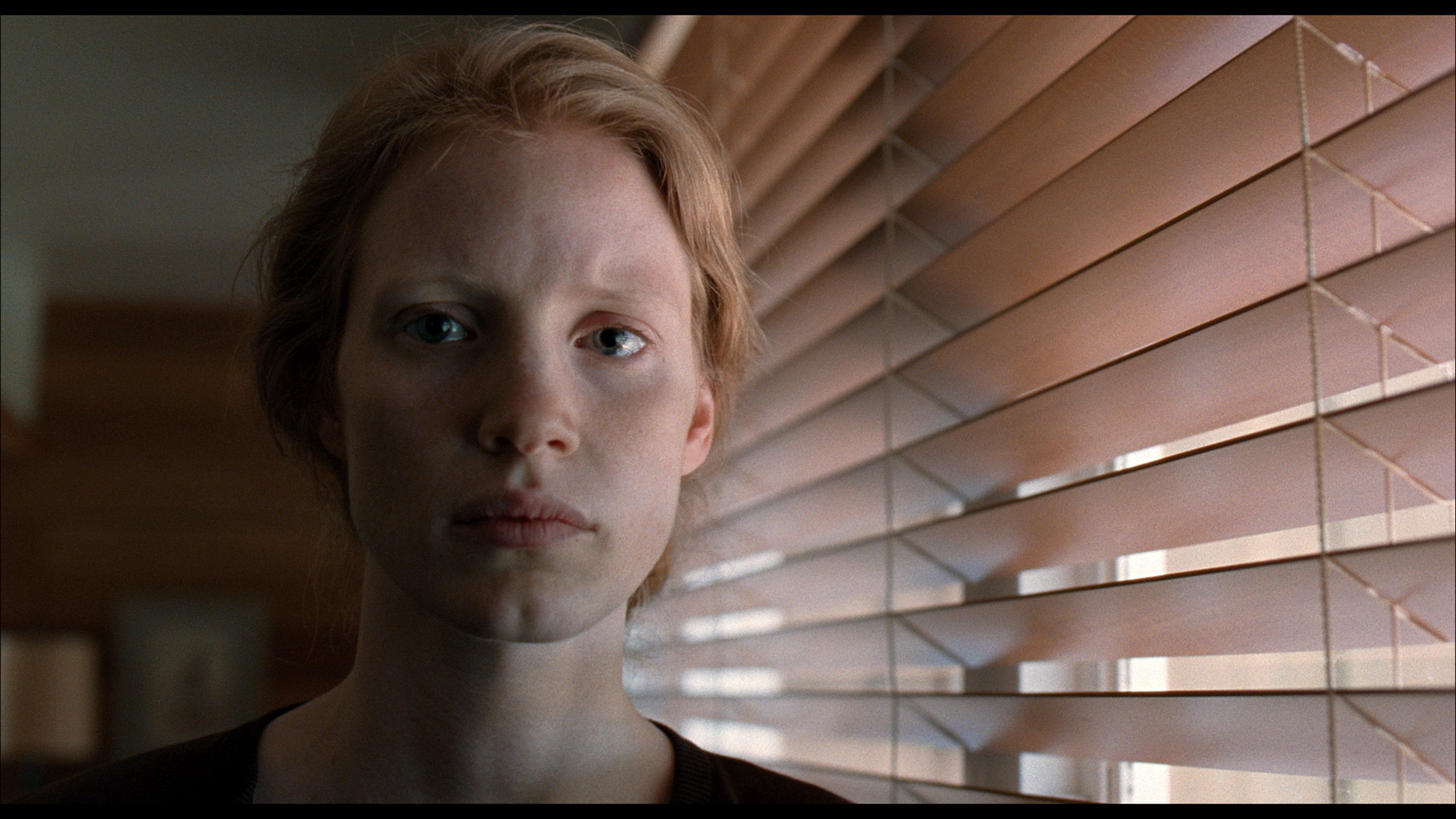
Factory Mode
After calibration
Samsung 65 S90D with a QD-OLED panel has been tested in Filmmaker mode, which the manufacturer has been using for years to provide the best possible picture settings. In this mode, the TV offers a fairly decent image but with some shortcomings worth noting. In terms of white balance in HD content, viewers may notice a dominance of the red color. This effect can lead to the impression that certain skin tones appear unnatural and the overall scene will be too warm, which in turn can affect immersion in the watched material. In scenes where subtle differences in color are crucial, these distortions can be particularly noticeable. Similar sensations may also occur in 4K HDR content. Changes in white balance in this case can be analogous, with a noticeably smaller deviation in red color. This can also cause certain details and colors to not be fully represented, making the image lose its naturalness.
When it comes to contrast, the gamma presents quite well, however, some errors are still noticeable. Gamma values are below the reference level of 2.4, which can result in bright areas of the image being washed out and dark areas lacking detail. This limitation can cause some scenes to lack depth and detail, which in turn affects the overall presentation quality. On the other hand, the EOTF curve related to contrast in 4K HDR content performs really well, showing that the TV can effectively convey differences in brightness. Nevertheless, it is worth noting that these values are slightly below the ideal level on the graph, indicating the need for further optimization in this regard.
Samsung S90D in Filmmaker mode offers solid color reproduction, but requires some adjustments to fully realise the potential of the TV, especially in the context of different types of content.
We tested the U7Q in the best possible picture mode, which is Filmmaker Mode. This mode is supposed to provide the most "cinematic" experience that aligns with the creators' intentions – straight out of the box. Unfortunately… even this professionally sounding name doesn’t guarantee a perfect image.
In our unit, the problem lay in the poorly set white balance. In both HD and 4K content, the image had too much blue and red, resulting in a slightly pinkish hue on the screen. It didn’t look terrible, but it was noticeable – especially in bright scenes and on white backgrounds. That alone could have been forgiven, but the biggest issue is managing brightness in HDR content. The EOTF curve from the measurements confirms what we saw earlier during scene tests: the television can overly dim the smallest bright elements, causing them to nearly disappear, or conversely – excessively brighten the brightest parts, which affects the naturalness of the image.
Color reproduction after calibration
8.9/10
7.4/10

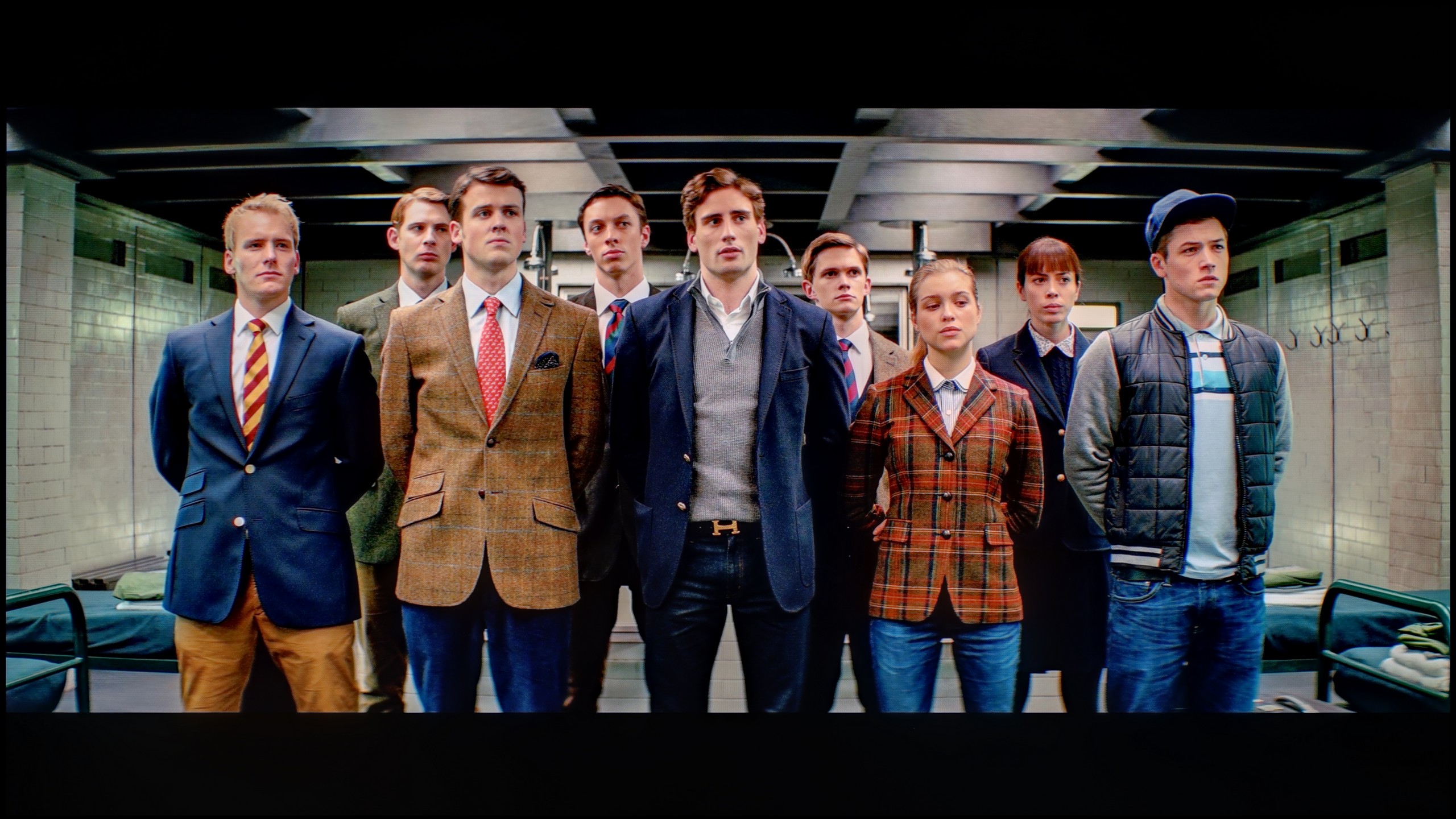

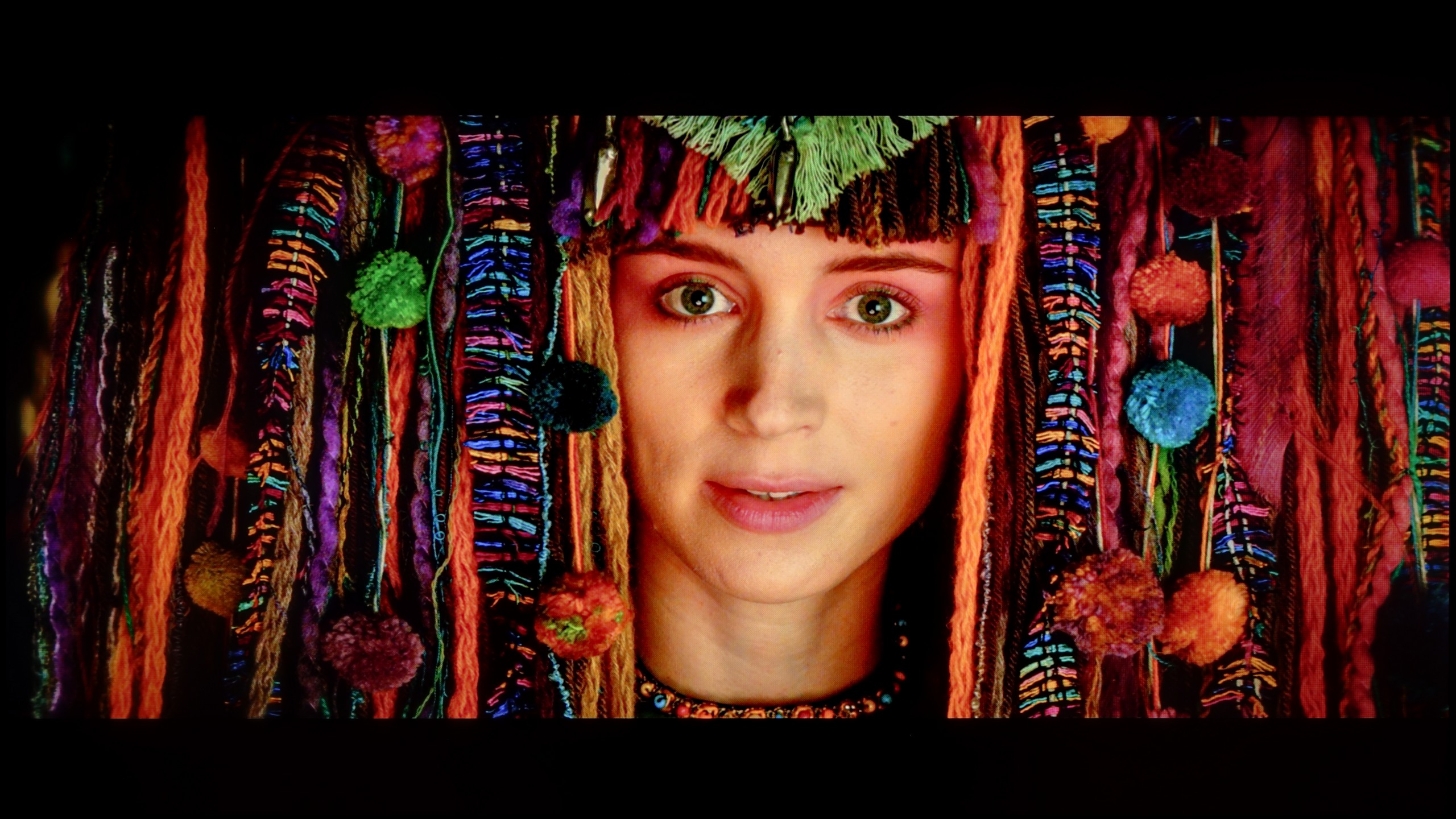
After calibrating the TV, the Samsung S90D in film mode gains quality more than one might expect. The white balance for HD and 4K HDR content has been adjusted to near perfection. Although minor shortcomings can be noticed, they are subtle enough that they don’t significantly impact the overall picture quality. The colours have become more harmonised, aiding in the natural reproduction of details, particularly in scenes that require precise colour representation. It is worth noting that this model, in this size, uses a QD-OLED panel which offers broader colour gamut coverage compared to other sizes of this model that are equipped with a WOLED panel.
The contrast has also significantly improved. After calibration, the gamma graph is much closer to the expected line, providing a better balance between light and dark tones in the picture. The EOTF curve, which before calibration indicated issues with overexposed scenes, now shows significantly better results. This effect allows for the retention of more details in the bright areas of the image, especially in HDR materials.
Thanks to specialist tools, we managed to correct the colour quality in SDR content to almost perfection. In materials with lower dynamics, delta E errors dropped below 0.5, which can be considered an almost reference result. The picture on television, YouTube, or classic Full HD looks really good after calibration. Well then – but where was it not so easy to improve the image? Primarily it concerns HDR quality content. Although we managed to somewhat "tame" the white balance and eliminate pink tints in most scenes, unfortunately, we did not have full control over brightness management. We set the local dimming settings according to the best observations – SDR: Medium, HDR: High – but the U7Q still did everything a bit its own way. There were still cases of overly strong dimming or brightening of details that calibration simply could not eliminate. And although the overall reception of content is much better, one must reckon that the U7Q will always have something to say at the end with "but".
Smoothness of tonal transitions
8.6/10
9.9/10





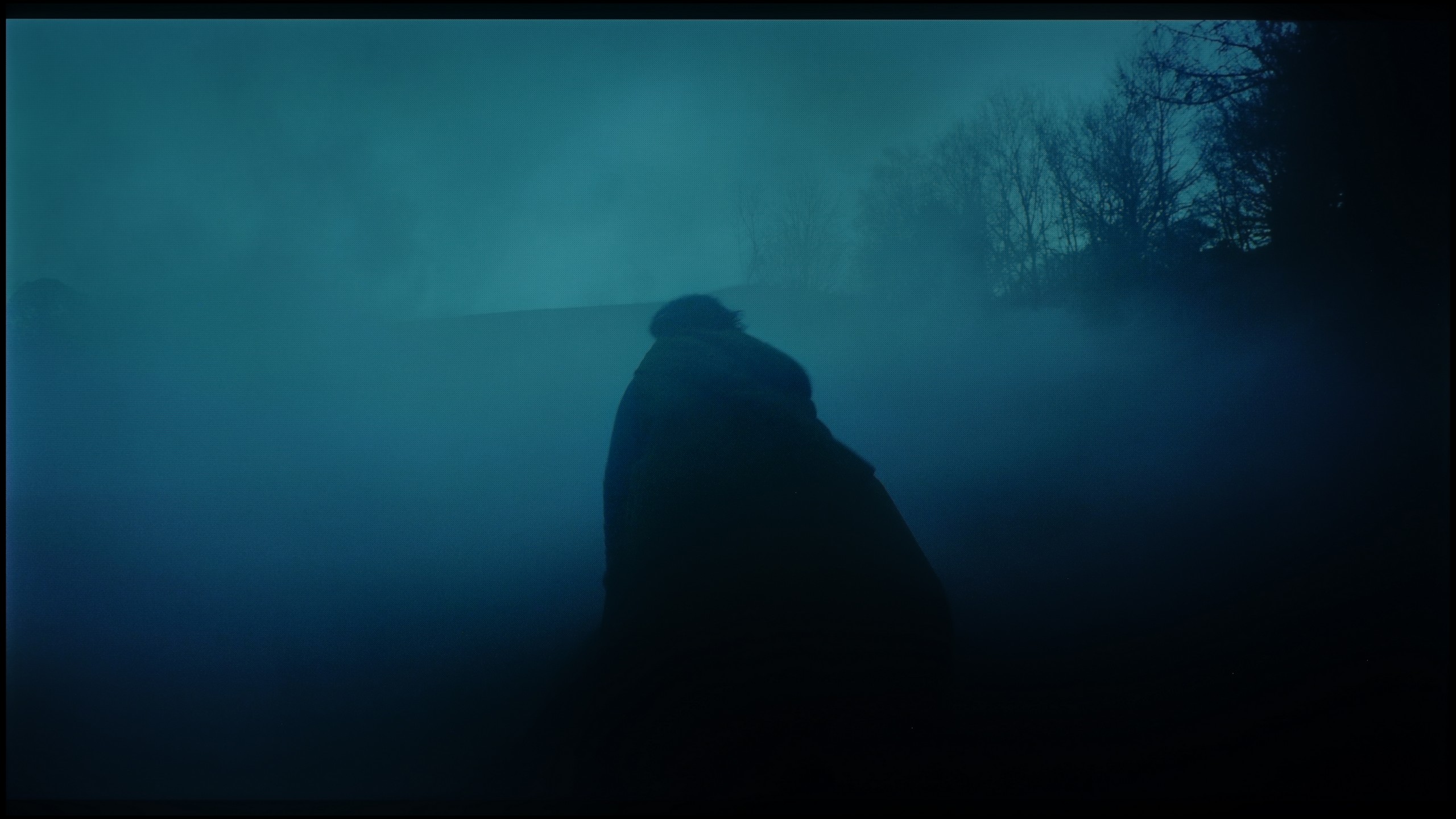






In the category of fluid tonal transitions, the television S90D exhibits significantly better results than its counterpart with a WOLED panel. Thanks to the use of a QD-OLED panel, this model provides more consistent and natural transitions between colours. Although some minor imperfections were noted during testing, they are subtle enough not to impact the overall visual experience. When watching various video content, tonal transitions are smooth and harmonious, allowing viewers to enjoy the depth and detail of the image without irritating distractions. In tested scenes where colour changes are particularly important, such as in landscapes or dynamic sequences, the television Samsung S90D performs excellently, rendering differences in shades with adequate precision.
U7Q performs exceptionally when it comes to tonal transitions – we can confidently say that it’s nearly at a reference level, which is why this television receives one of the highest possible ratings from us in this category. The colour blends are smooth, clear, without any noticeable banding. In most scenes, everything looks just perfect, and any minor imperfections may only appear in very specific shots – though we hardly noticed them during testing.
Image scaling and smoothness of tonal transitions
8/10
6/10
Smooth transition function

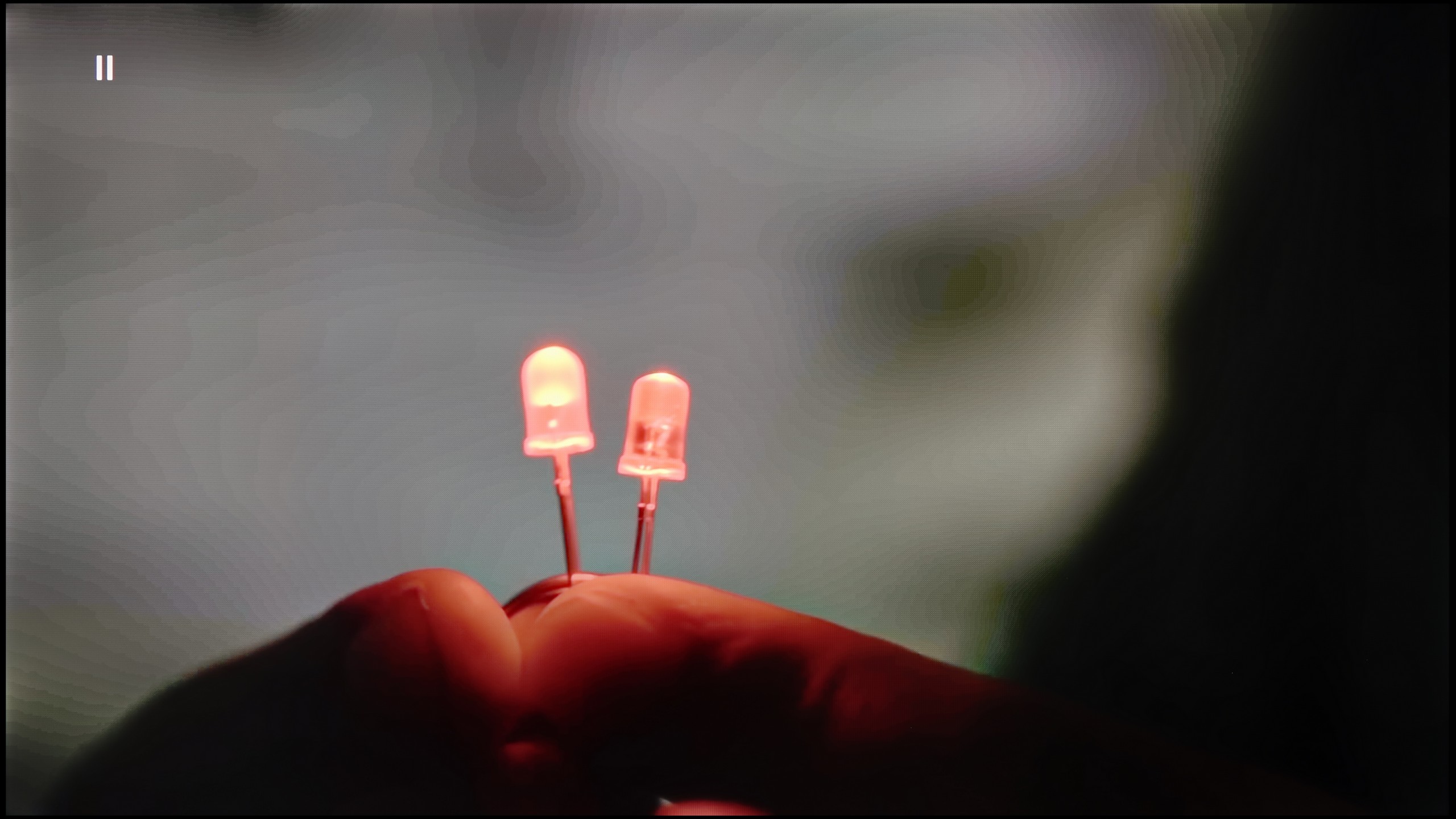
Image without overscan on the SD signal


The television handles tonal transitions excellently, allowing colours to flow smoothly into each other, creating a natural image. The built-in noise reduction feature can further enhance these transitions, which can be useful in certain situations. However, it is worth remembering that activating this option may lead to excessive smoothing of the desired film grain structure, which in turn can affect the authenticity and atmosphere of the image. Therefore, caution is recommended when using this feature to avoid losing the character and depth of the content.
The Samsung S90D model effectively processes materials in lower resolutions. This can be seen in the displayed image. The model's silhouette is clear and naturally reproduced, with details well preserved. Additionally, the branches of the trees are well-defined, showing no visible jagged edges that could degrade the quality of the image. Thanks to effective upscaling, even lower resolution materials look attractive on the screen, which will surely please users enjoying a variety of content sources, such as standard cable or antenna television.
There are situations where we would like to smooth out tonal transitions a bit, especially in older materials – those with limited source quality. The U7Q has been equipped with a feature called “Smooth and Gradient Image,” but unfortunately… it works very poorly. In the “Low” option, the effects are practically unnoticeable, and other settings smooth out the details but don’t improve tonal transitions. The only positive thing is that the feature doesn’t interfere with the film grain, so it doesn’t ruin the natural structure of the image.
Fortunately, content scaling performs quite well. The image is not overly sharpened, there is no artificial clarity – and while it’s known that this isn’t the level of high-end TVs, the U7Q has no problem displaying really old content in a completely acceptable manner.
Blur and motion smoothness
8.5/10
7.5/10


Blur (native resolution, maximum refresh rate):




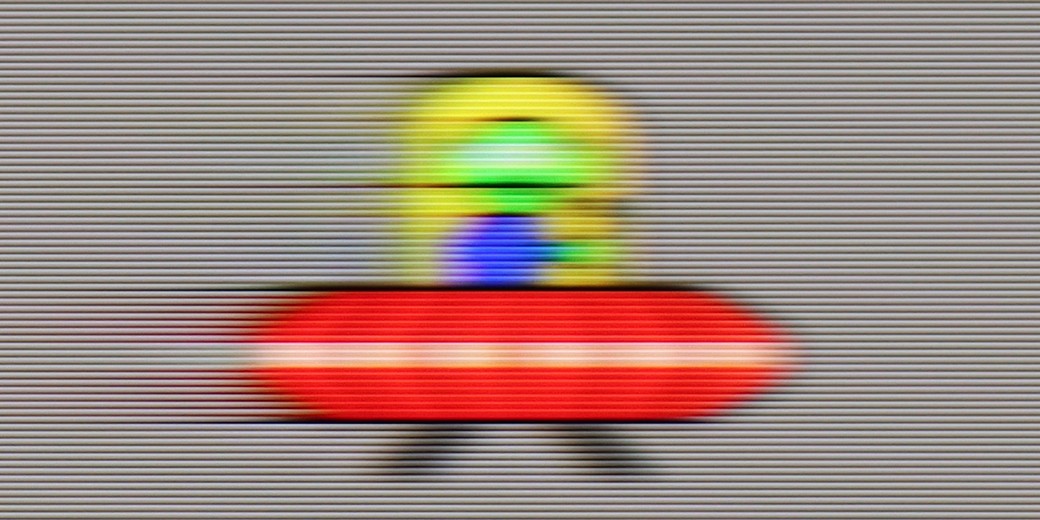
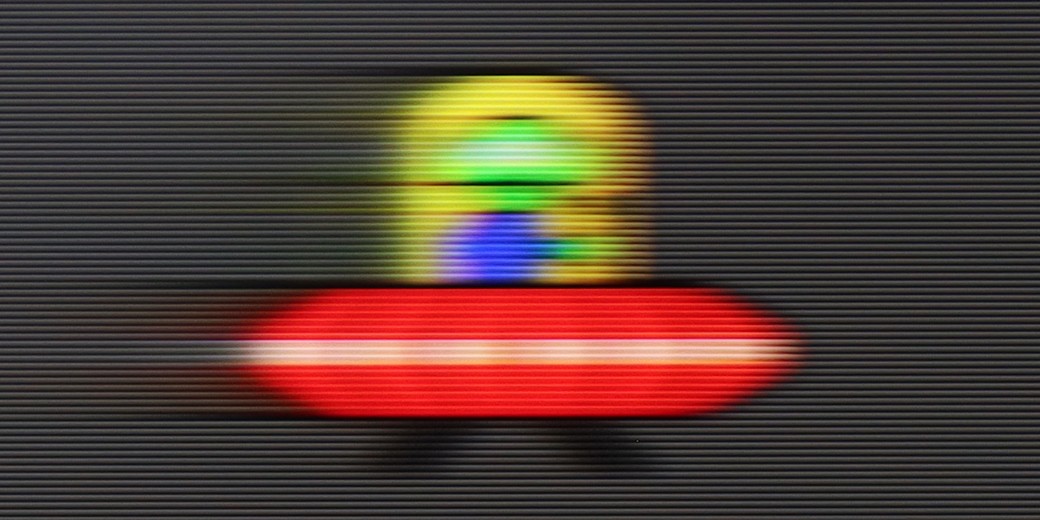
Blur (BFI function enabled):
Image flickers in this mode



Smużenie ():
Smużenie (1080p 240Hz):

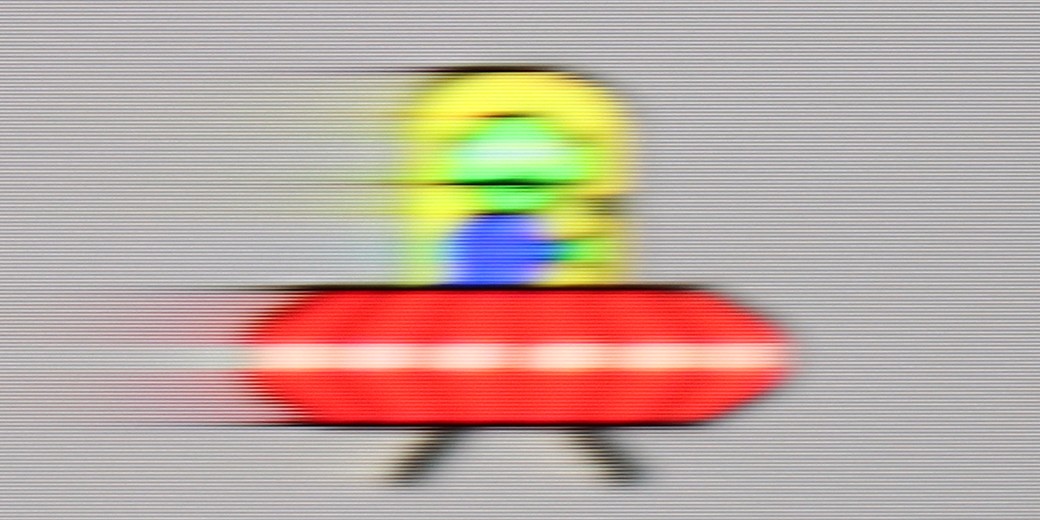
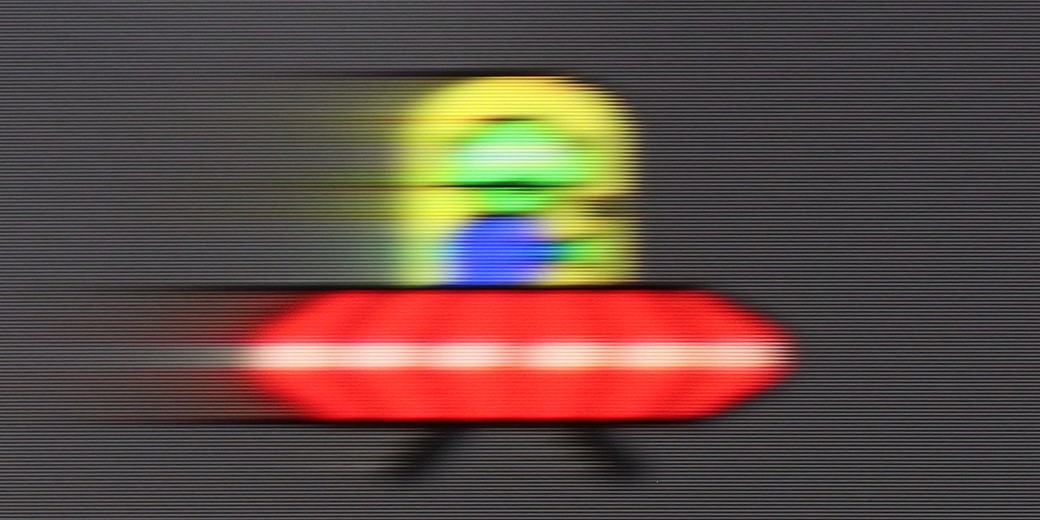
Samsung S90D TV, equipped with a refresh rate panel of 120 Hz, and in the appropriate PC configuration even 144 Hz, ensures excellent motion fluidity. Samsung focuses on a variety of image clarity settings on a ten-point scale, giving users the freedom to adjust the display to their own preferences. In UFO tests, the OLED panel shows its strengths, eliminating any blurring. The lightning-fast pixel response makes dynamic movements faithfully reproduced.
Similar results can be observed in other sizes of this model with a WOLED panel, which also offer excellent image fluidity. Organic technology, in this case, is considered one of the best on the market. The picture of Samsung S90D, regardless of the type of panel, is incredibly sharp and detailed, making this TV perfect for dynamic scenes, both during gaming and sports broadcasts. Additionally, its capabilities in terms of refresh rate and clarity ensure that every movement is smooth and natural, which will certainly satisfy even the most demanding users.
U7Q is a truly fast TV, much like its more powerful version “PRO”. At 4K resolution, it supports up to 144 Hz refresh rate, and if someone wants even more – in Full HD, you can achieve up to 240 Hz! This will mainly benefit PC gamers, but it’s worth appreciating – it’s a rare feature in this price segment. Right from the start, it’s clear that the U7Q has been designed with dynamic content in mind, such as games or sports. In films, we’re not left “out in the cold” either – the U7Q offers an “Ultra Motion Smoothness” feature, where with two sliders, you can adjust whether you want a smoother, theatrical picture, or something closer to cinematic style with a visible frame. It’s good that, like most manufacturers, we have a choice here and can customise it to our own preferences.
Console compatibility and gaming features
9.5/10
8.5/10
- ALLM
- VRR
- VRR range48 - 144Hz48 - 240Hz
- Dolby Vision Game Mode
- Correct implementation of HGIG
- 1080p@120Hz
- 1440p@120Hz
- 4K@120Hz
- Game bar



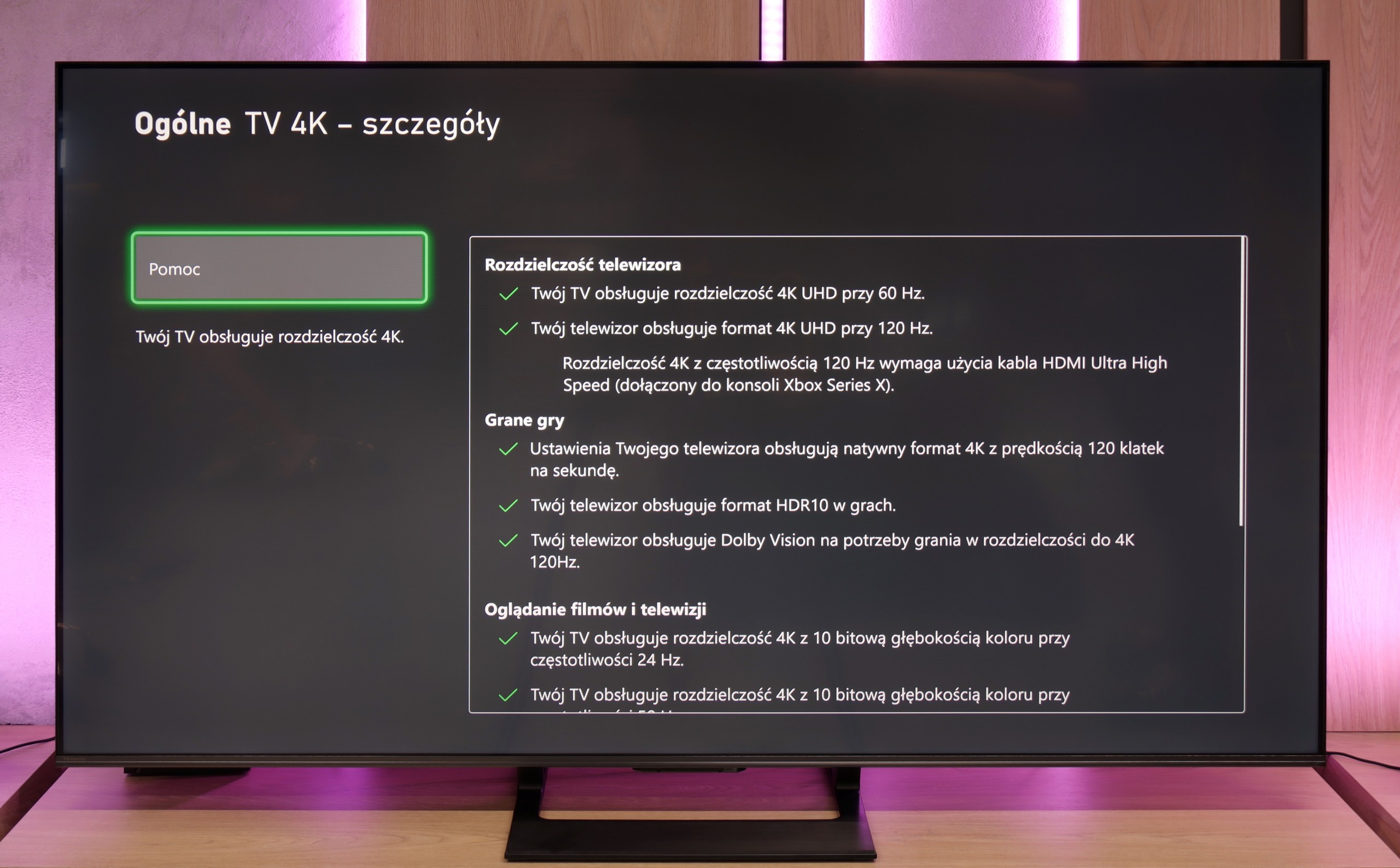



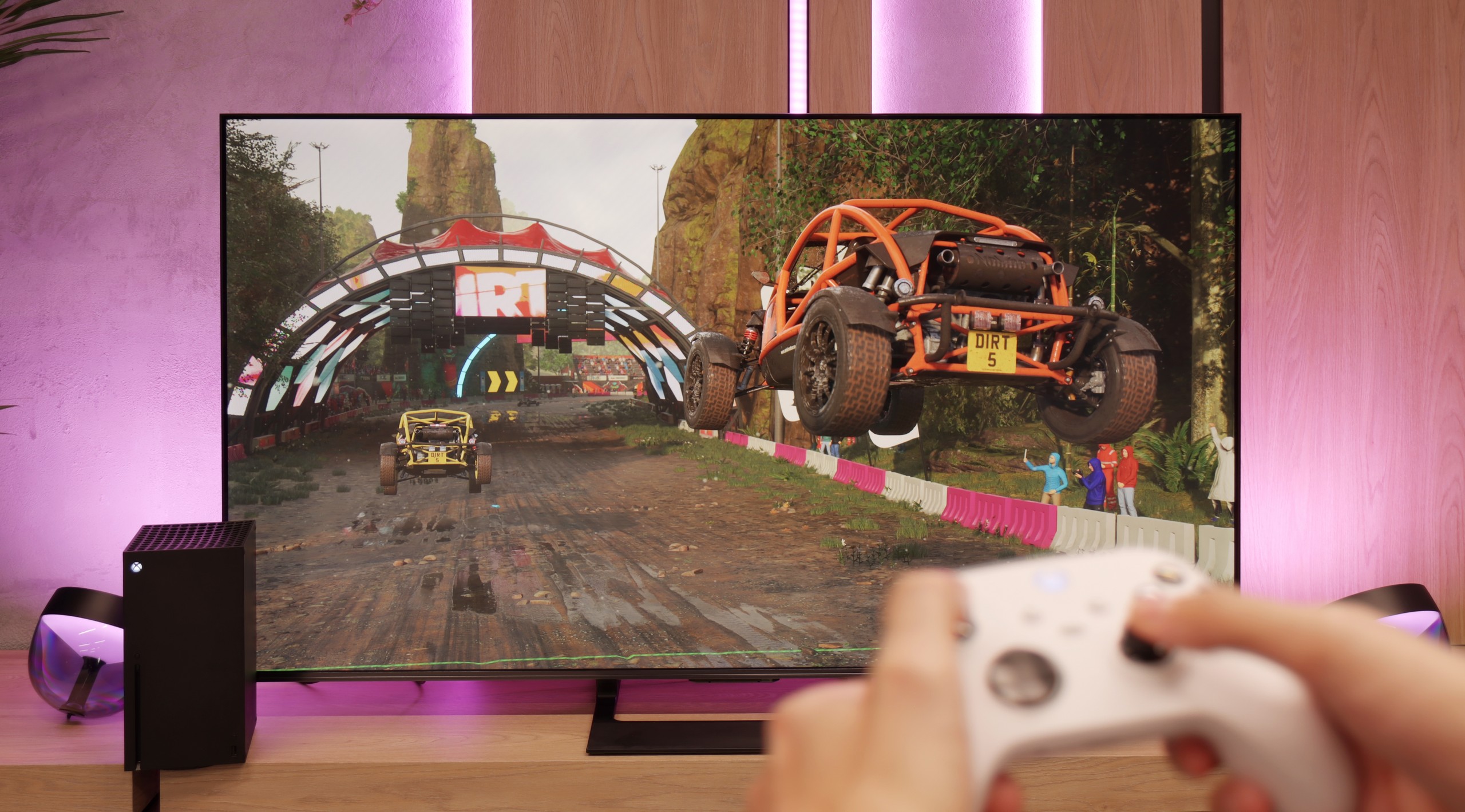
Television S90D is an excellent solution for gamers, offering a range of advanced features that elevate the gaming experience to a new level. Equipped with the HDMI 2.1 standard, the model supports modern technologies such as VRR (Variable Refresh Rate) and ALLM (Auto Low Latency Mode). Thanks to these solutions, the image is incredibly smooth, and the response to commands is instantaneous, which is crucial in dynamic titles. Additionally, the S90D supports HLG (Hybrid Log-Gamma) and G-Sync and FreeSync image synchronisation. This allows for a perfect connection with the Xbox, PlayStation, or PC, eliminating issues with tearing and stuttering. The built-in operating system offers the Xbox Game Pass app, providing access to a massive library of games directly from the television. This solution makes gaming even more convenient and accessible. The Game Bar feature provides quick access to important information, such as current settings, performance statistics, and the ability to adjust image options. This allows for on-the-fly modification of display parameters, which is incredibly useful during intense gameplay. Despite lacking support for Dolby Vision, Samsung S90D still delivers excellent HDR image quality, allowing for full utilisation of the potential of games and films. As a result, S90D represents a unique combination of modern technologies, excellent image quality, and intuitive features, perfect for any gaming enthusiast.
The Hisense U7Q is a TV designed with gamers in mind – and you can see that straight away with its gaming capabilities. It has practically everything you could wish for: Variable Refresh Rate (VRR) – check, Auto Low Latency Mode (ALLM) – check, and high refresh rates of up to 240 Hz in Full HD, along with support for various resolutions, not just 4K. It’s truly an impressive set of features that makes the U7Q perform well with both fast-paced shooters on consoles and more demanding titles on PC. Of course – like most Hisense models – it lacks a proper implementation of the HGiG feature. It’s a shame because HGiG allows the console's brightness to be adjusted to the specific TV, which in practice makes it easier to display HDR games according to the creators' intentions. Without this, you just have to deal with some limitations in the final HDR image in games.
Input lag
10/10
9.7/10
SDR
HDR
Dolby Vision
QD-OLED from Samsung stands out with an incredibly low input lag, making it an excellent choice for gamers. Regardless of the resolution or refresh rate, both in SDR and HDR mode, results around 10 ms are truly impressive. Such a low input lag ensures immediate response to actions on the screen, which is crucial in dynamic games where every millisecond counts. Users can enjoy smoothness and precision, which makes the S90D TV with QD OLED panel a superb option for those who prioritise performance in gaming.
The input lag on the U7Q is really impressive. With 120 Hz content, we achieved around 9 ms, and with 60 Hz – around 17 ms. These are fantastic results that make the TV great for even dynamic games requiring quick responses. It’s hard to fault anything here. Of course, as is often the case, the Dolby Vision mode in games seems a bit slower compared to standard SDR or HDR. This will be mainly noticeable for Xbox Series X/S console users, who are the only ones supporting Dolby Vision Gaming. Fortunately, the input lag still remains below 30 ms, so in practice, this is still an acceptable level even for more demanding gamers.
Compatibility with PC
8.6/10
8.6/10

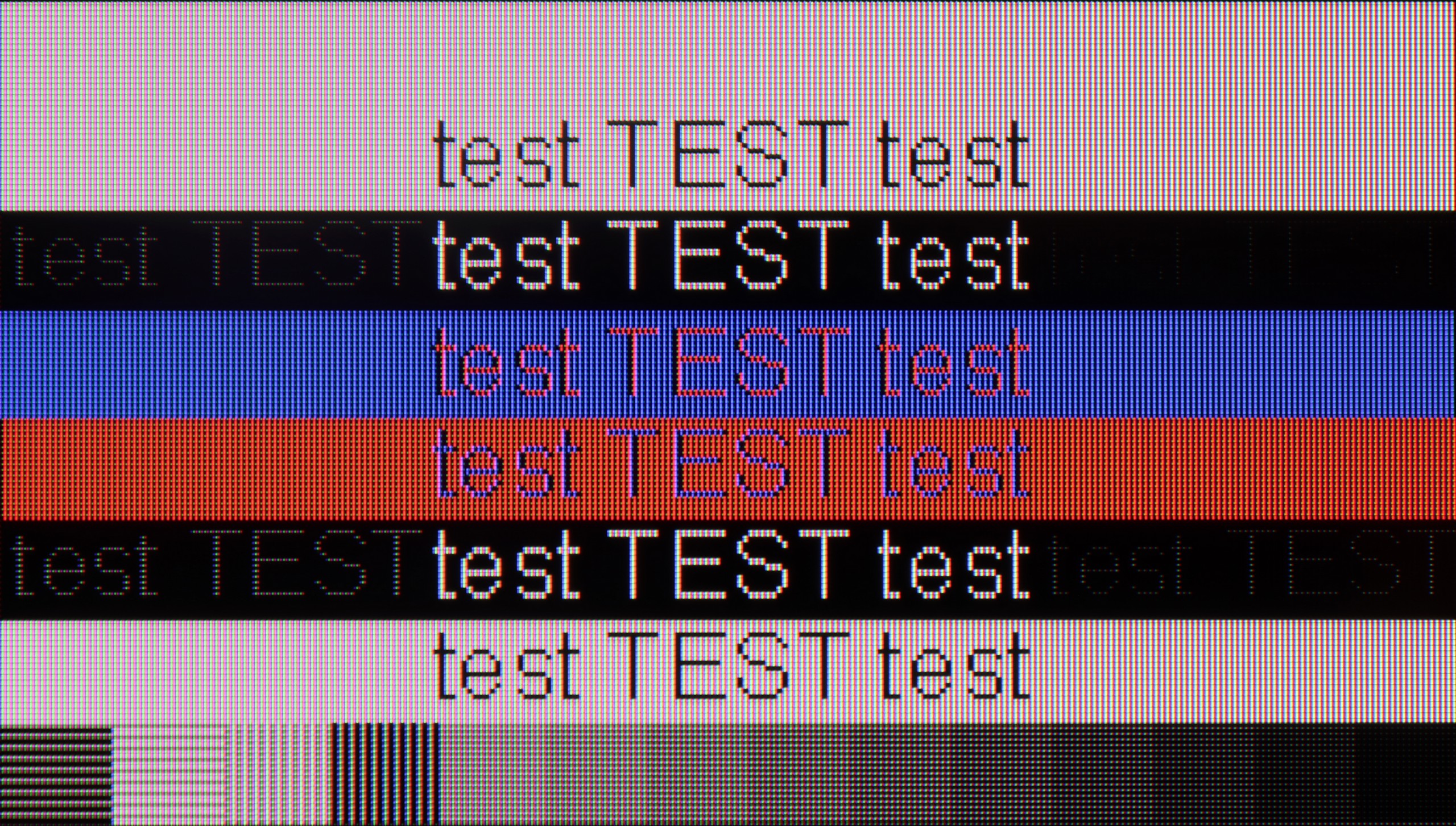
The Samsung S90D 65 TV performs excellently as a monitor for PCs. Fonts appear sharp, making it easier to read and use various applications. Support for chroma 4:4:4 at a resolution of 4K and a refresh rate of 144 Hz ensures full colour reproduction and outstanding image clarity. Moreover, the impressive input lag of just 5 ms is a significant advantage, especially for gamers and professionals working with graphics. However, it should be noted that points were deducted in this category compared to the WOLED panel version due to the different diamond arrangement of sub-pixels, which may lead to the distinct visibility of individual sub-pixels when displaying fonts on a dark background. This issue only pertains to the 65-inch version, so users who plan to use the TV on their desk will not encounter these difficulties with smaller variants.
The U7Q communicates great with the computer. For gamers, this is fantastic news – we have high refresh rates, low input lag, and G-SYNC support, making gaming from a PC an absolute pleasure. But the U7Q also performs well in everyday tasks. If someone uses a computer for text, web browsing, or office work – there’s nothing to nitpick about. The TV correctly handles chroma 4:4:4, so fonts look sharp and clear, without blurring or strange outlines. Both small and capital letters are simply legible – just as they should be.
Viewing angles
9.8/10
3/10
In the category of viewing angles, the S90D Samsung stands out as one of the best models on the market. While traditional OLED TVs already offer solid performance, the use of a QD-OLED panel in the S90D elevates the picture quality to an even higher level. Thanks to the combination of Quantum Dot technology with self-emissive pixels, users can enjoy excellent color accuracy and detail, even when watching the TV from a wide angle.
The viewing angles on the U7Q are rather weak – that's just typical for VA panel characteristics. Directly in front, everything looks very good: blacks are deep, colours are saturated, and the contrast is high. But just moving slightly to the side is enough for the picture to start losing quality – colours become paler, and blacks begin to resemble dark grey. Compared to TVs with IPS panels, the U7Q performs worse, although on the other hand, it compensates with better contrast and deeper blacks.
TV efficiency during daytime
5.3/10
6.2/10

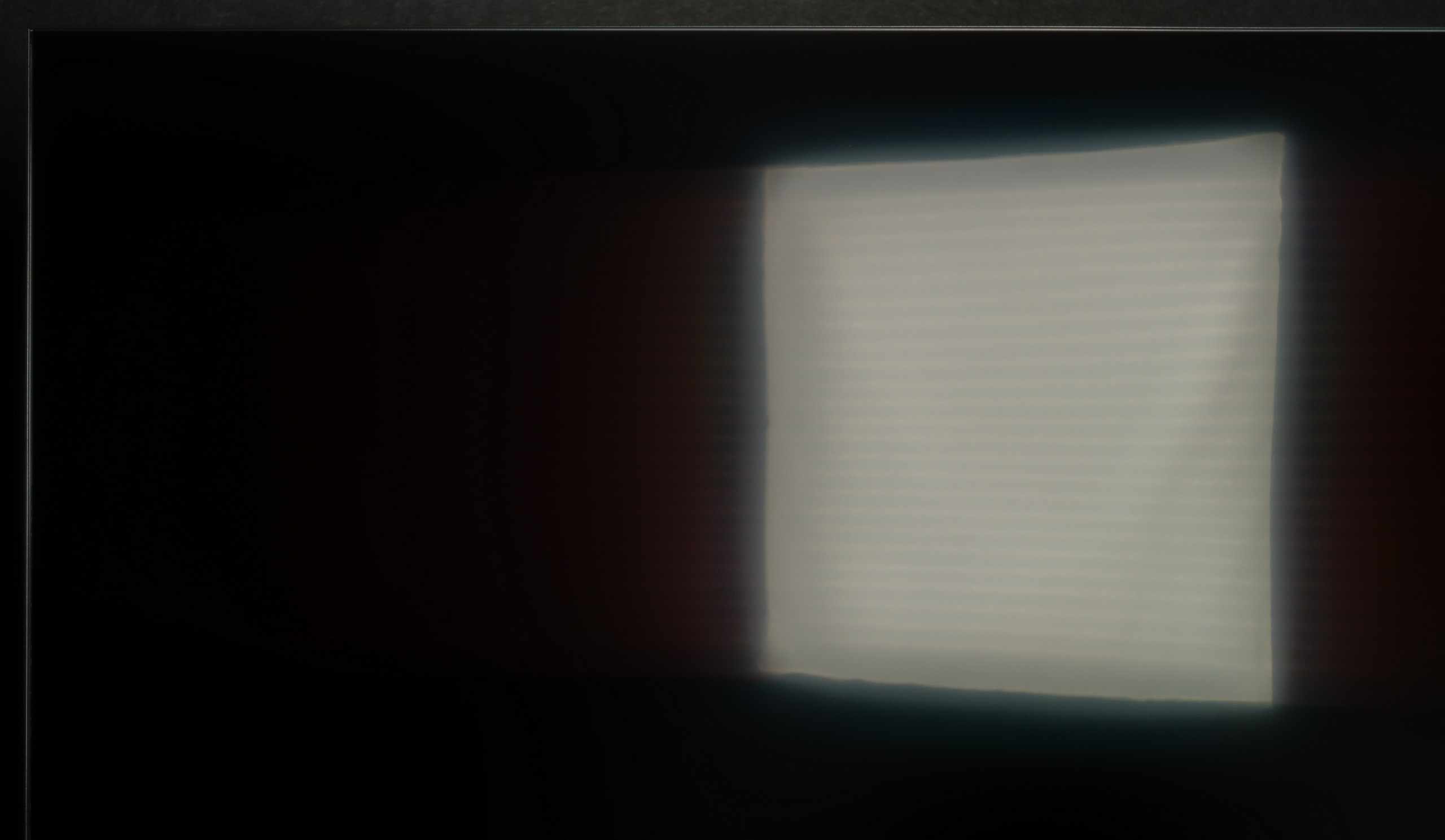

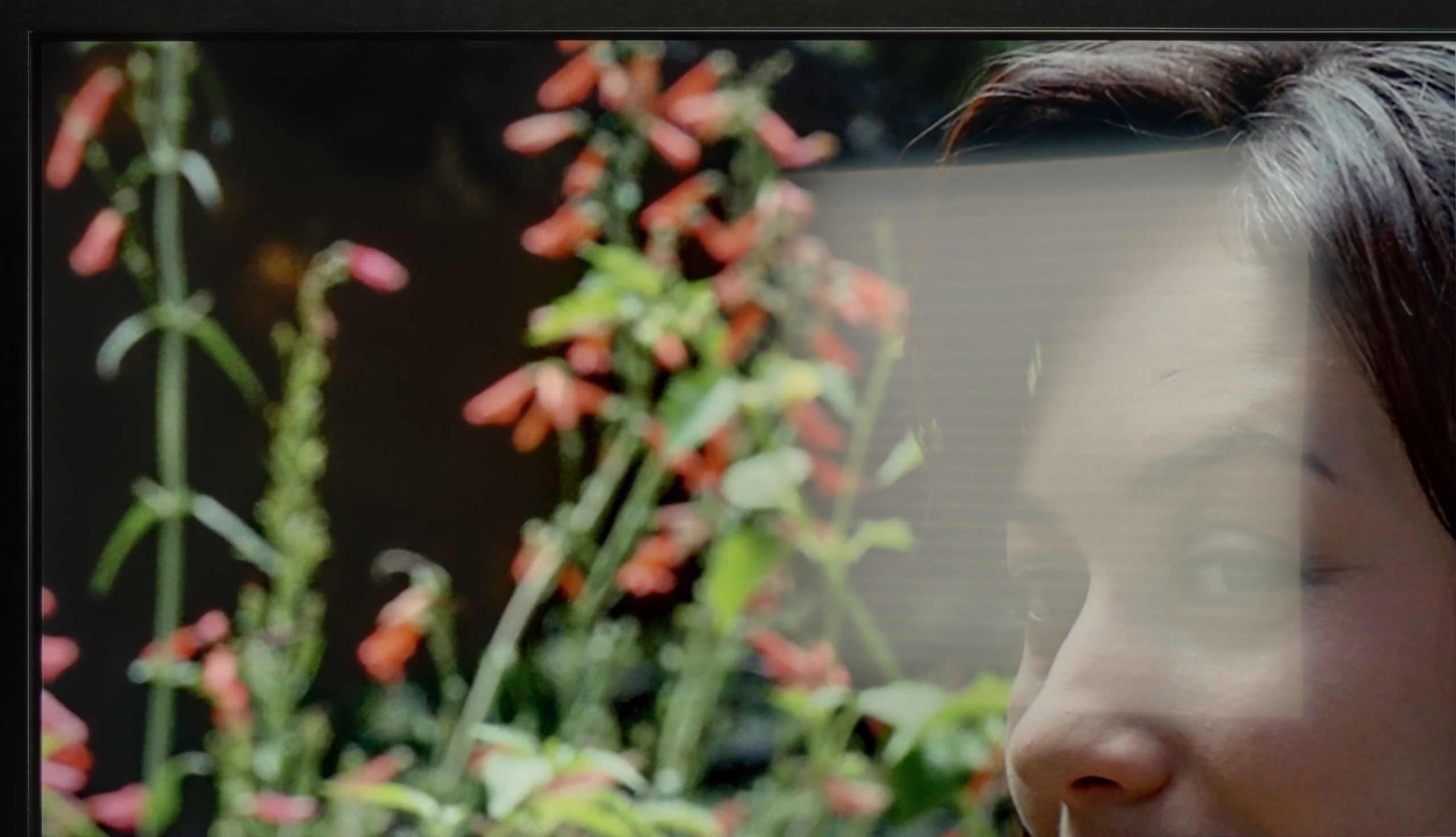
Matrix brightness
Average luminance SDR
Hisense U7Q: 519 cd/m2
Samsung QD-OLED S90D / S94D: 339 cd/m2
In the category of TV performance during the day, the model Samsung S90D 65 ranks the worst among the tested options. Although the glossy panel and good anti-reflective properties suggest some efficiency in bright conditions, the quality of blacks during sunny days proves to be the biggest issue. This phenomenon is caused by the close placement of quantum dots to the outer layer of the screen. Under the influence of external light rays, these dots can activate, resulting in the blacks on the screen becoming more cherry-like. This effect causes the image to lose depth and intensity, which can be particularly noticeable in darker scenes. As a result, users who plan to use the TV in bright rooms or under strong sunlight may encounter difficulties in achieving satisfactory image quality. However, when it comes to watching movies with a lot of black, this usually takes place in the evenings when the issue of intense sunlight is no longer as significant. In such conditions, the S90D performs significantly better, and users can enjoy a pleasant visual experience. During the day, while watching regular TV, the television also performs adequately, which means it is not a complete disqualifier for this model.
The U7Q performs quite well in sunny rooms. Brightness in SDR mode averages around 520 nits, which practically means that even on a sunny day, you can comfortably watch television without the feeling that everything is drowning in reflections. Additionally, thanks to the satin coating on the panel, the television handles reflections well.
Details about the matrix
Subpixel Structure:

Panel uniformity:

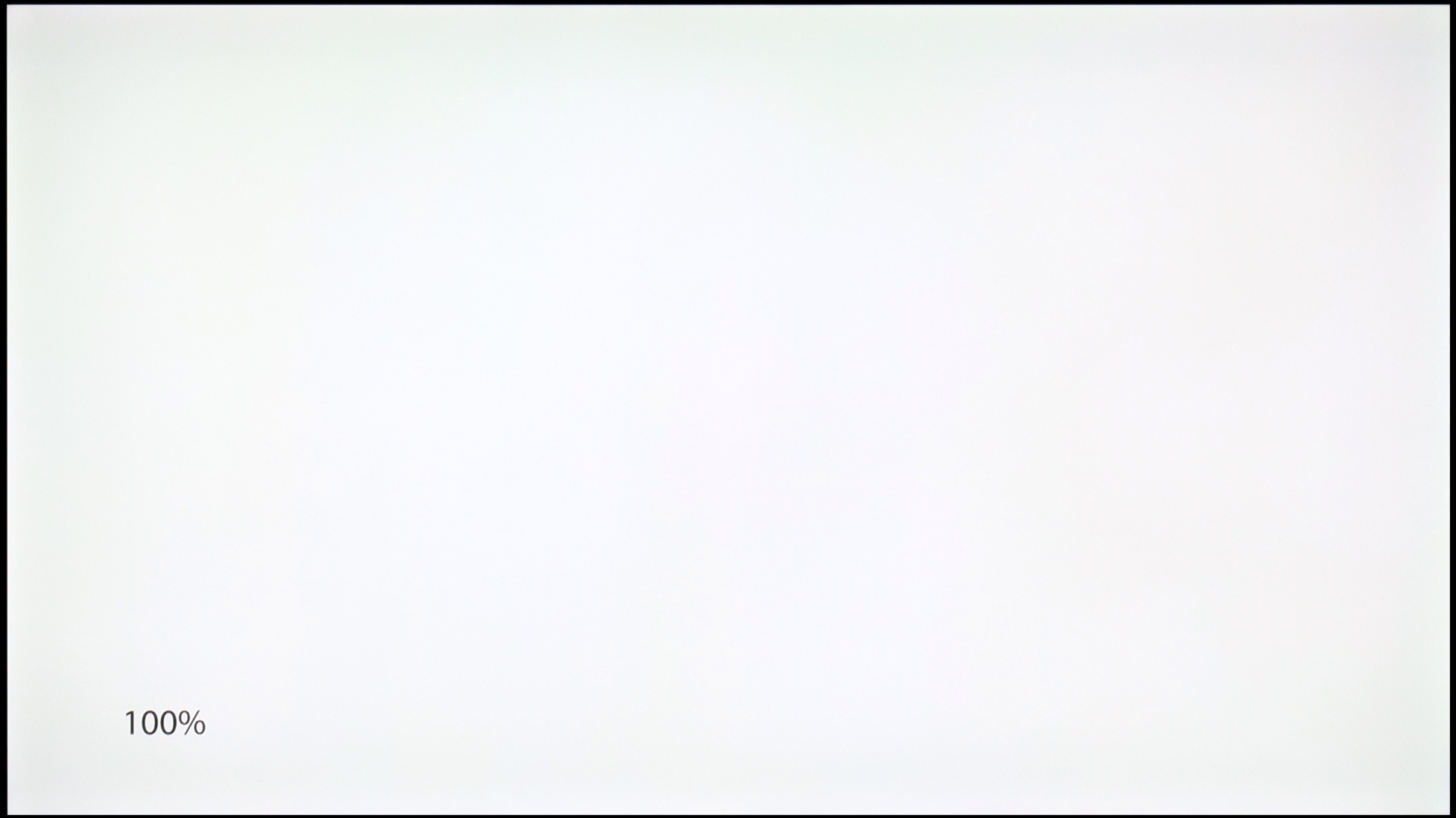
Samsung QD-OLED S90D / S94D
Hisense U7Q
TV features
7.7/10
8.9/10
- HDMI inputs0 x HDMI 2.0, 4 x HDMI 2.1 48Gbps2 x HDMI 2.0, 2 x HDMI 2.1 48Gbps
- Other inputsRCA (Chinch)
- OutputsToslink (Optical audio), eARC (HDMI), ARC (HDMI)Toslink (Optical audio), eARC (HDMI), ARC (HDMI), Mini-Jack (Headphones)
- Network InterfacesWi-Fi 2.4GHz, Wi-Fi 5GHz, Ethernet (LAN) 100MbpsWi-Fi 2.4GHz, Wi-Fi 5GHz, Ethernet (LAN) 100Mbps
- TV receptionDVB-T, DVB-T2, DVB-S, DVB-S2, DVB-CDVB-T, DVB-T2, DVB-S, DVB-S2
Classic features:
- Recording to USB (terrestrial TV)
- Recording programming
- Picture in Picture (PiP)
- RF remote control (no need to aim at the screen)
- Backlit remote control
- Teletext
- Audio only mode
- Possibility to connect Bluetooth headphones to the TV
- Possibility to simultaneously use Bluetooth headphones and the TV speaker
Smart features:
- AirPlay
- Screen mirroring (Windows Miracast)
- Wyszukiwanie głosowe
- Voice search in native language
- Ability to connect a keyboard and mouse


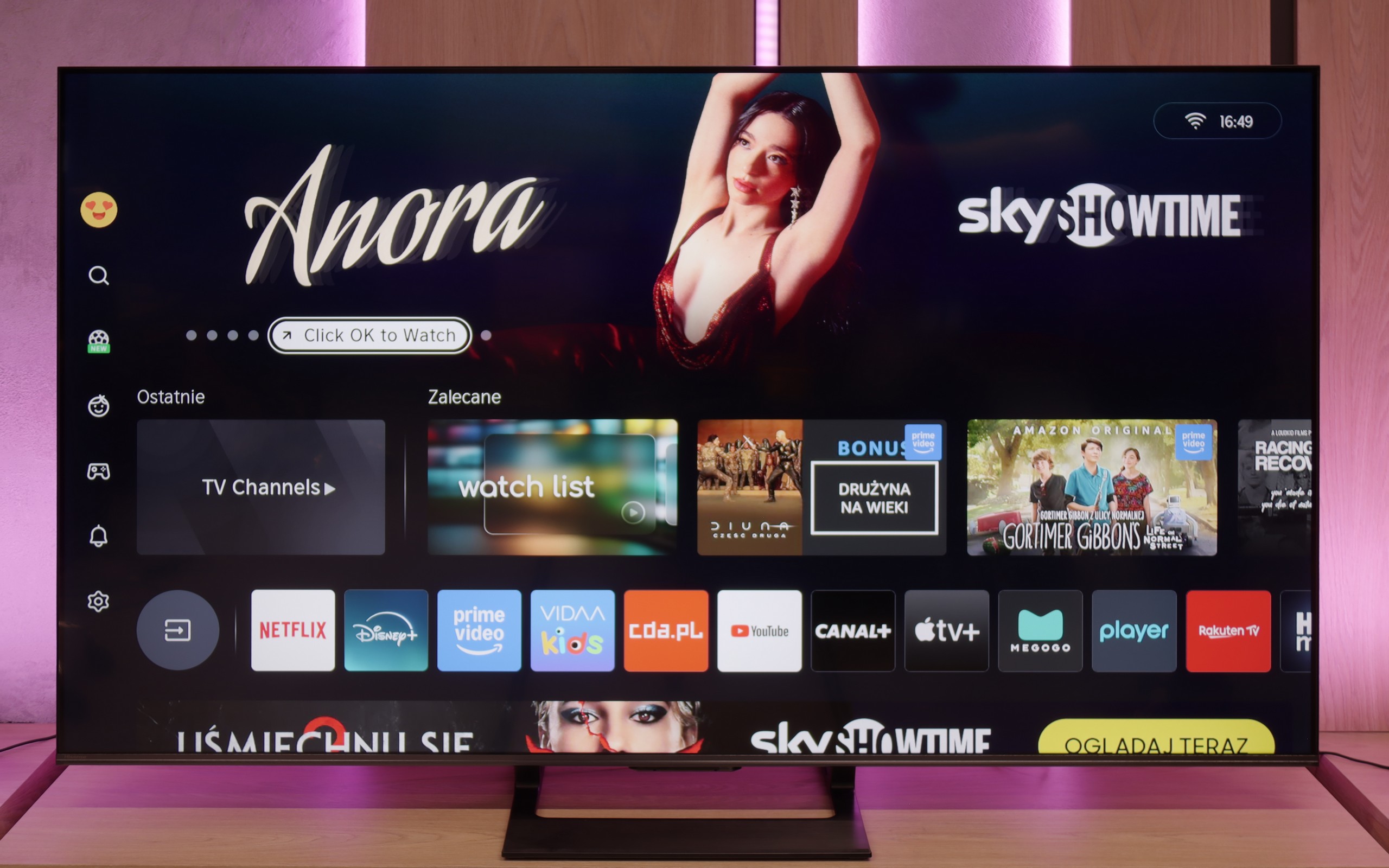

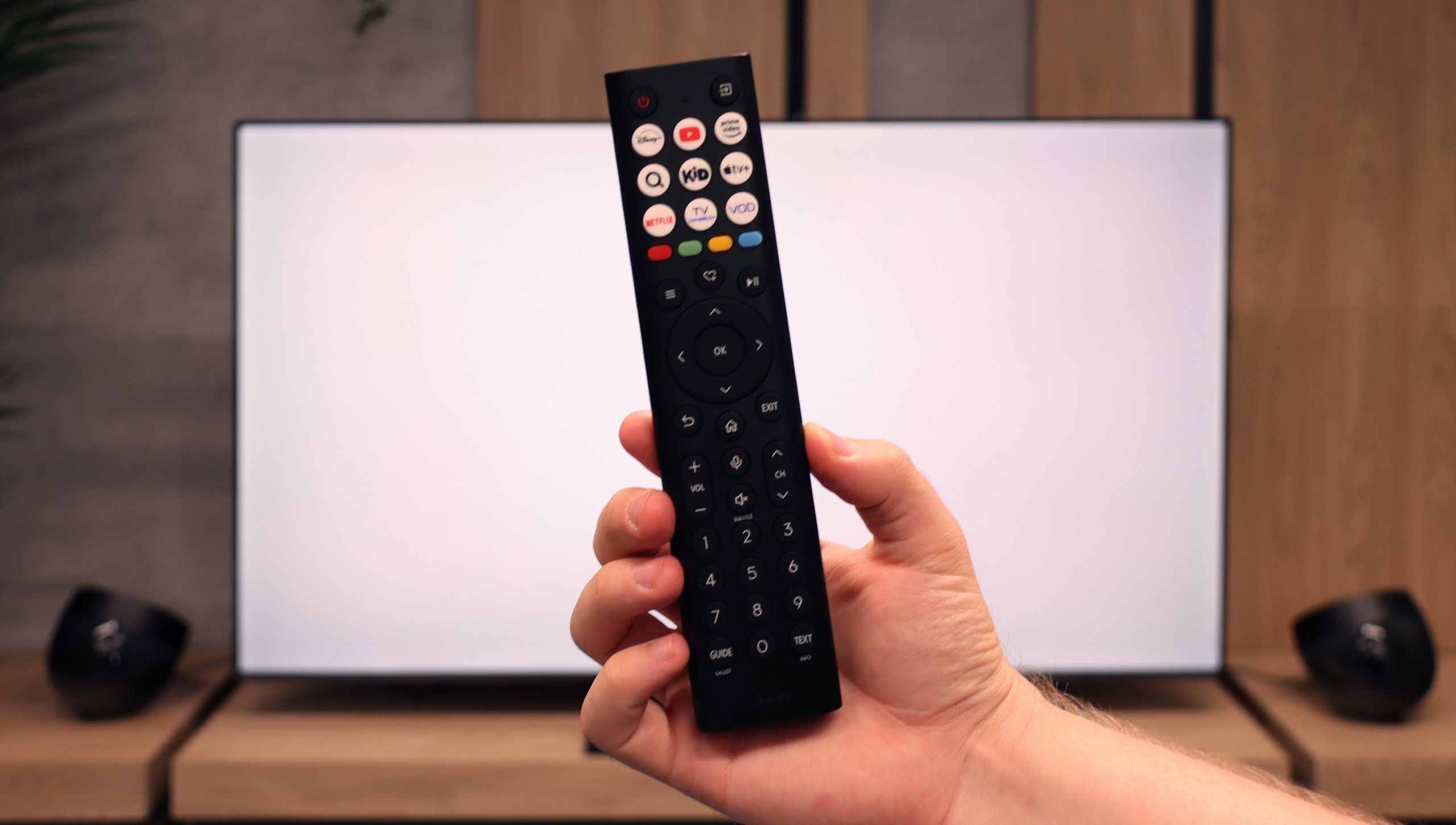
The Samsung S90D television offers a range of features that significantly enhance user comfort, making it an ideal device for entertainment in the comfort of your home. The Tizen system, on which this model is based, is a modern and advanced platform that provides users with an intuitive and seamless experience. Thanks to the user-friendly interface, navigating through applications and settings is quick and intuitive, making it easy to use the television even for those less familiar with technology. Tizen supports a rich set of applications, including all popular streaming services such as Netflix, YouTube, and Amazon Prime Video. A new feature for 2024 is the availability of voice search in Polish. It is also worth noting the eco-friendly solar remote, which is not only environmentally friendly but also practical for everyday use. With it, you can control multiple devices connected to the television, eliminating the need for multiple remotes. Additionally, the television supports AirPlay, enabling easy content sharing from Apple devices such as iPhone or iPad. The S90D also allows for the connection of various Bluetooth devices like mice, keyboards, or headphones, which increases its versatility and allows for user experience personalisation. Furthermore, the SmartThings app significantly enhances the capabilities of the television, allowing integration with other smart home devices. This enables remote management of lighting, security, and other aspects of the home ecosystem. Users can also take advantage of the Philips Hue app, which allows for lighting synchronisation with the image displayed on the screen, creating even more immersive visual experiences. The only downside that can be pointed out is the lack of USB recording support. For some users, this may be a limitation. Despite this, the S90D television offers many advanced features and technologies that make it an excellent choice for anyone seeking high-quality entertainment in their home and wanting to integrate their devices into one convenient system.
Classic features of U7Q
Hisense U7Q really has a lot to offer when it comes to classic TV features. You can record shows onto USB, easily connect external devices via Bluetooth, and the interface – such as the EPG – is clear and readable. It may sound like something that mainly seniors would appreciate, but the truth is that U7Q has practically everything needed for watching classic television. The only thing missing here is the PiP (picture-in-picture) feature.
Smart TV U7Q: Vidaa
When it comes to smart features, U7Q runs on the proprietary VIDAA system. And I must say – it runs really smoothly. Voice search in Polish? No issues at all. AirPlay and screen mirroring? They also work without a hitch. Of course, one must be aware that VIDAA is a closed system, so – as is often the case – it lacks a few popular apps, especially those related to music. Therefore, it’s worth checking before purchasing to see if all the apps you use daily are available.
Playing files from USB
8.9/10
8.2/10
Supported photo formats:
Maximum photo resolution:


Samsung S90D is fitted with a built-in player that supports most popular video formats, allowing for convenient playback of films from various sources. The player also supports subtitles in Polish and allows users to customise the font colour, enhancing comfort when watching content with subtitles. In terms of photo formats, the television handles many, but one of the few downsides is the inability to play the popular PNG format. Nevertheless, the overall playback capabilities of the S90D are at an excellent level.
The built-in player in the U7Q completely meets the needs of most future users. The television effortlessly supports Polish characters and most popular video, audio, and photo formats. If we had to nitpick, it would only be the limited support for certain photo resolutions – there are times when files from the camera are not displayed correctly. So it’s worth keeping this in mind if you plan to show photos straight from a DSLR or phone.
Apps
8.7/10
7.7/10














































Sound
7.4/10
7.2/10
- Subjective sound quality:7.4/107.2/10
- Dolby Digital Plus 7.1:
- Dolby True HD 7.1:
- Dolby Atmos in Dolby Digital Plus (JOC):
- Dolby Atmos in Dolby True HD:
- DTS:X in DTS-HD MA:
- DTS-HD Master Audio:
The Samsung S90D TV is equipped with a 2.1 audio system boasting a total power of 40 W, delivering clear and dynamic sound. With a subwoofer located at the bottom of the casing, the bass is deep and palpable, while the mid and high tones remain well-balanced. It's worth noting that the twin model S94D offers an even more advanced 2.1.2 speaker setup with a power of 60 W. If the silver colour of the S94D casing is not a drawback, and the price difference between these models is minimal, it’s worth considering the version with the “4” at the end. Despite lacking support for the DTS format, the S90D TV utilises other advanced sound technologies such as Dolby Atmos and Dolby Digital Plus, providing spacious and immersive sound. It is also worth mentioning the presence of the proprietary Q-Symphony feature, which allows synchronisation of the TV's speakers with the manufacturer's soundbar.
Sound is one of the biggest advantages of the U7Q. The TV plays really nicely – there's a slight discernible bass, good tonal balance, and it's definitely more than just for "casual news watching." You can easily play music on it and just sit back and enjoy the sound – of course, in an entertainment sense, not an audiophile one 😉. A big plus is also the full support for the most important audio codecs, which worked flawlessly. The only exception is Dolby Atmos in TrueHD format, which didn’t fully work when connected to the home theatre, so if someone uses that format – it's worth keeping in mind - perhaps it's a software glitch.


